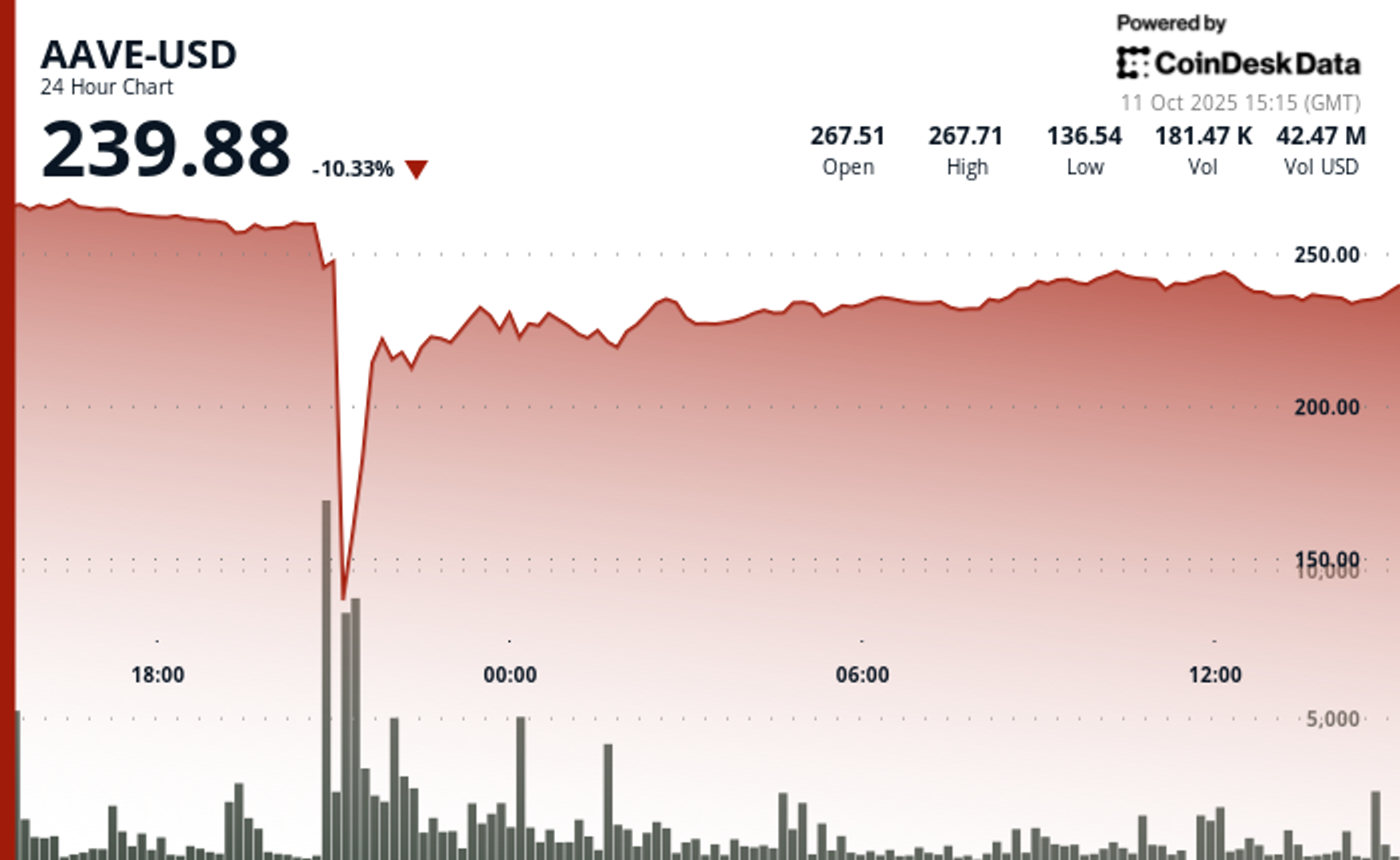Uncategorized
Crypto’s Compliance Conundrum

As Bitcoin continues to rise and institutional investors pour over $20 billion into crypto ETFs, a fundamental shift is occurring in digital asset markets. The appointment of Paul Atkins as SEC Chair, known for favoring market-driven solutions over heavy-handed enforcement, has fueled optimism that crypto can finally balance innovation with regulation.
But the crypto industry faces a stark choice that no amount of regulatory flexibility can overcome: either sacrifice the unlimited programmability that makes these systems revolutionary, or accept that their compliance from an anti-money laundering regulation perspective cannot be fully automated or built into the system. This isn’t a temporary technological limitation about one system or another – it’s as fundamental as the laws of mathematics.
Automating Market Integrity
To begin to see why, we can think about an economy where shells are money. If we pass a law that nobody can transact more than 10 times per day or hold more than 10% of the shells, we have an enforcement problem. How do we know who holds which shells when? Information asymmetry stymies compliance and compliance devolves to a surveillance challenge.
Blockchain technology solves that problem. If everyone sees where all the shells are all the time, then enforcement works. We can build compliance into a system and deny banned transactions. Here, the transparency from the blockchain enables automated compliance.
But the long-held premise of Web3 is to automate stock exchanges and myriad complex interactions. Doing so requires moving beyond shells to a system where users create their own assets and upload their own programs. And permissionless access to publish these complex programs causes trouble for users who may be exposed to malicious programs or scams, the system which may face congestion, and regulators who care about preventing financial crimes.
The core challenge lies in what computer scientists call «undecidability.» In traditional finance, when regulators impose rules like «no transactions with sanctioned entities» or «maintain capital adequacy ratios,» banks can implement these requirements through their existing control systems. But, in a truly decentralized system where anyone can deploy sophisticated smart contracts, it becomes mathematically impossible to verify in advance whether a new piece of code might violate these rules.
JPMorgan’s recent rebranding of Onyx to Kinexys illustrates this reality. The platform now processes over $2 billion in daily transactions, and participation is by participants who meet regulatory criteria before joining. Unlike typical cryptocurrency platforms where anyone can write and deploy automated trading programs (known as smart contracts), JPMorgan’s system maintains compliance by restricting what participants can do.
This approach has attracted major institutional players like BlackRock and State Street, which collectively have more than $15 trillion in assets under management. Many crypto enthusiasts view such restrictions as betraying the technology’s promise. These compromises are not just pragmatic choices – they’re necessary for any system that aims to guarantee regulatory compliance.
The Securities and Exchange Commission’s mandate to protect investors while facilitating capital formation has grown increasingly complex in the digital age. Under Gary Gensler’s leadership, the SEC took an enforcement-heavy approach to crypto markets, treating most digital assets as securities requiring strict oversight. While Atkins’ anticipated principles-based approach might seem more accommodating, it cannot change the underlying mathematical constraints that make automated compliance impossible in permission-less, fully programmable systems.
The limitations of fully automated systems became painfully clear at MakerDAO, one of the largest decentralized lending platforms with over $10 billion in assets. During March 2024’s market turbulence, when Bitcoin’s price swung 15% in hours, MakerDAO’s automated systems began triggering a cascade of forced liquidations that threatened to collapse the entire platform.
Despite years of refinement and over $50 million spent on system development, the protocol required emergency human intervention to prevent a $2 billion loss. Similar incidents at Compound and Aave, which together handle another $15 billion in assets, underscore that this wasn’t an isolated case. This wasn’t just a technical failure – it demonstrates the impossibility of programming systems to handle every potential scenario while maintaining regulatory compliance.
Towards Compliant Crypto
The industry now faces three paths forward, each with distinct implications for investors:
First, follow JPMorgan’s lead by building permission-based systems that sacrifice some decentralization for clear regulatory compliance. This approach has already gained significant traction: six of the top ten global banks have launched similar initiatives in 2024, collectively handling over $2 trillion in transactions. The surge in regulated crypto products, from ETFs to tokenized securities, further validates this path.
Second, limit blockchain systems to simple, predictable operations that can be automatically verified for compliance. This is the approach adopted by Ripple with its newly launched RUSD, designed to be compliant with the New York Department of Financial Services standards based on the limited purpose trust company framework. While this constrains innovation due to the restriction action space that users can make, it enables decentralization within carefully defined boundaries.
Third, continue pursuing unlimited programmability while accepting that such systems cannot provide strong regulatory guarantees. This path, chosen by platforms like Uniswap with its over $1 trillion in total trading volume in 2024, faces mounting challenges. Recent regulatory actions against similar platforms in Singapore, the U.K. and Japan suggest this approach’s days may be numbered in developed markets.
For investors navigating this evolving landscape, the implications are clear. The current market enthusiasm, largely driven by regulated products like ETFs, indicates the industry is moving toward the first option. Projects that acknowledge and address these fundamental constraints, rather than fighting them, are likely to thrive. This explains why traditional financial institutions’ blockchain initiatives, despite their limitations, are seeing dramatic growth – JPMorgan’s platform reported a 127% increase in transaction volume this year.
The success stories in crypto’s next chapter will likely be hybrid systems that balance innovation with practical constraints. Investment opportunities exist in both regulated platforms that provide clear compliance guarantees and innovative projects that thoughtfully limit their scope to achieve verifiable safety properties.
As this market matures, understanding these mathematical constraints becomes crucial for investors’ risk assessment and portfolio allocation. The evidence is already clear in market performance: regulated crypto platforms have delivered average returns of 156% over the past year, while unrestricted platforms face increasing volatility and regulatory risks.
Atkins’ principles-based approach might offer more flexibility than Gensler’s prescriptive rules, but it cannot override the fundamental limits of automated compliance. Just as physics constrains what’s possible in the physical world, these mathematical principles set immutable boundaries in financial technology. The impossible dream isn’t cryptocurrency itself – it’s the notion that we can have unrestricted programmability, complete decentralization and guaranteed regulatory compliance all at once.
For the crypto industry to deliver on its revolutionary potential, it must first acknowledge these immutable constraints. The winners in this next phase won’t be those promising to overcome these mathematical limits, but those who design intelligent ways to work within them.
Business
AAVE Sees 64% Flash Crash as DeFi Protocol Endures ‘Largest Stress Test’

The native token of Aave (AAVE), the largest decentralized crypto lending protocol, was caught in the middle of Friday’s crypto flash crash while the protocol proved resilient in a historic liquidation cascade.
The token, trading at around $270 earlier in Friday, nosedived as much as 64% later in the session to touch $100, the lowest level in 14 months. It then staged a rapid rebound to near $240, still down 10% over the past 24 hours.
Stani Kulechov, founder of Aave, described Friday’s event as the «largest stress test» ever for the protocol and its $75 billion lending infrastructure.
The platform enables investors to lend and borrow digital assets without conventional intermediaries, using innovative mechanisms such as flash loans. Despite the extreme volatility, Aave’s performance underscores the evolving maturity and resilience of DeFi markets.
«The protocol operated flawlessly, automatically liquidating a record $180M worth of collateral in just one hour, without any human intervention,» Kulechov said in a Friday X post. «Once again, Aave has proven its resilience.»
Key price action:
- AAVE sustained a dramatic flash crash on Friday, declining 64% from $278.27 to $100.18 before recuperating to $240.09.
- The DeFi protocol demonstrated remarkable resilience with its native token’s 140% recovery from the intraday lows, underpinned by substantial trading volume of 570,838 units.
- Following the volatility, AAVE entered consolidation territory within a narrow $237.71-$242.80 range as markets digested the dramatic price action.
Technical Indicators Summary
- Price range of $179.12 representing 64% volatility during the 24-hour period.
- Volume surged to 570,838 units, substantially exceeding the 175,000 average.
- Near-term resistance identified at $242.80 capping rebound during consolidation phase.
Disclaimer: Parts of this article were generated with the assistance from AI tools and reviewed by our editorial team to ensure accuracy and adherence to our standards. For more information, see CoinDesk’s full AI Policy.
Business
Blockchain Will Drive the Agent-to-Agent AI Marketplace Boom

AI agents, software systems that use AI to pursue goals and complete tasks on behalf of users, are proliferating. Think of them as digital assistants that can make decisions and take actions towards goals you set without needing step-by-step instructions — from GPT-powered calendar managers to trading bots, the number of use cases is expanding rapidly. As their role expands across the economy, we have to build the right infrastructure that will allow these agents to communicate, collaborate and trade with one another in an open marketplace.
Big tech players like Google and AWS are building early marketplaces and commerce protocols, but that raises the question: will they aim to extract massive rents through walled gardens once more? Agents’ capabilities are clearly rising, almost daily, with the arrival of new models and architectures. What’s at risk is whether these agents will be truly autonomous.
Autonomous agents are valuable because they unlock a novel user experience: a shift from software as passive or reactive tools to active and even proactive partners. Instead of waiting for instructions, they can anticipate needs, adapt to changing conditions, and coordinate with other systems in real time, without the user’s constant input or presence. This autonomy in decision-making makes them uniquely suited for a world where speed and complexity outpace human decision-making.
Naturally, some worry about what greater decision-making autonomy means for work and accountability — but I see it as an opportunity. When agents handle repetitive, time-intensive tasks and parallelize what previously had to be done in sequence, they expand our productive capacity as humans — freeing people to engage in work that demands creativity, judgment, composition and meaningful connection. This isn’t make-believe, humanity has been there before: the arrival of corporations allowed entrepreneurs to create entirely new products and levels of wealth previously unthought of. AI agents have the potential to bring that capability to everyone.
On the intelligence side, truly autonomous decision-making requires AI agent infrastructure that is open source and transparent. OpenAI’s recent OSS release is a good step. Chinese labs, such as DeepSeek (DeepSeek), Moonshot AI (Kimi K2) and Alibaba (Qwen 3), have moved even quicker.
However, autonomy is not purely tied to intelligence and decision making. Without resources, an AI agent has little means to enact change in the real world. Hence, for agents to be truly autonomous they need to have access to resources and self-custody their assets. Programmable, permissionless, and composable blockchains are the ideal substrate for agents to do so.
Picture two scenarios. One where AI agents operate within a Web 2 platform like AWS or Google. They exist within the limited parameters set by these platforms in what is essentially a closed and permissioned environment. Now imagine a decentralized marketplace that spans many blockchain ecosystems. Developers can compose different sets of environments and parameters, therefore, the scope available to AI agents to operate is unlimited, accessible globally, and can evolve over time. One scenario looks like a toy idea of a marketplace, and the other is an actual global economy.
In other words, to truly scale not just AI agent adoption, but agent-to-agent commerce, we need rails that only blockchains can offer.
The Limits of Centralized Marketplaces
AWS recently announced an agent-to-agent marketplace aimed at addressing the growing demand for ready-made agents. But their approach inherits the same inefficiencies and limitations that have long plagued siloed systems. Agents must wait for human verification, rely on closed APIs and operate in environments where transparency is optional, if it exists at all.
To act autonomously and at scale, agents can’t be boxed into closed ecosystems that restrict functionality, pose platform risks, impose opaque fees, or make it impossible to verify what actions were taken and why.
Decentralization Scales Agent Systems
An open ecosystem allows for agents to act on behalf of users, coordinate with other agents, and operate across services without permissioned barriers.
Blockchains already offer the key tools needed. Smart contracts allow agents to perform tasks automatically, with rules embedded in code, while stablecoins and tokens enable instant, global value transfers without payment friction. Smart accounts, which are programmable blockchain wallets like Safe, allow users to restrict agents in their activity and scope (via guards). For instance, an agent may only be allowed to use whitelisted protocols. These tools allow AI agents not only to behave expansively but also to be contained within risk parameters defined by the end user. For example, this could be setting spending limits, requiring multi-signatures for approvals, or restricting agents to whitelisted protocols.
Blockchain also provides the transparency needed so users can audit agent decisions, even when they aren’t directly involved. At the same time, this doesn’t mean that all agent-to-agent interactions need to happen onchain. E.g. AI agents can use offchain APIs with access constraints defined and payments executed onchain.
In short, decentralized infrastructure gives agents the tools to operate more freely and efficiently than closed systems allow.
It’s Already Happening Onchain
While centralized players are still refining their agent strategies, blockchain is already enabling early forms of agent-to-agent interaction. Onchain agents are already exhibiting more advanced behavior like purchasing predictions and data from other agents. And as more open frameworks emerge, developers are building agents that can access services, make payments, and even subscribe to other agents — all without human involvement.
Protocols are already implementing the next step: monetization. With open marketplaces, people and businesses are able to rent agents, earn from specialized ones, and build new services that plug directly into this agent economy. Customisation of payment models such as subscription, one-off payments, or bundled packages will also be key in facilitating different user needs. This will unlock an entirely new model of economic participation.
Why This Distinction Matters
Without open systems, fragmentation breaks the promise of seamless AI support. An agent can easily bring tasks to completion if it stays within an individual ecosystem, like coordinating between different Google apps. However, where third-party platforms are necessary (across social, travel, finance, etc), an open onchain marketplace will allow agents to programmatically acquire the various services and goods they need to complete a user’s request.
Decentralized systems avoid these limitations. Users can own, modify, and deploy agents tailored to their needs without relying on vendor-controlled environments.
We’ve already seen this work in DeFi, with DeFi legos. Bots automate lending strategies, manage positions, and rebalance portfolios, sometimes better than any human could. Now, that same approach is being applied as “agent legos” across sectors including logistics, gaming, customer support, and more.
The Path Forward
The agent economy is growing fast. What we build now will shape how it functions and for whom it works. If we rely solely on centralized systems, we risk creating another generation of AI tools that feel useful but ultimately serve the platform, not the person.
Blockchain changes that. It enables systems where agents act on your behalf, earn on your ideas, and plug into a broader, open marketplace.
If we want agents that collaborate, transact, and evolve without constraint, then the future of agent-to-agent marketplaces must live onchain.
Business
‘Largest Ever’ Crypto Liquidation Event Wipes Out 6,300 Wallets on Hyperliquid

More than 1,000 wallets on Hyperliquid were completely liquidated during the recent violent crypto sell-off, which erased over $1.23 billion in trader capital on the platform, according to data from its leaderboard.
In total, 6,300 wallets are now in the red, with 205 losing over $1 million each according to the data, which was first spotted by Lookonchain. More than 1,000 accounts saw losses of at least $100,000.
The wipeout came as crypto markets reeled from a global risk-off event triggered by U.S. President Donald Trump’s announcement of a 100% additional tariff on Chinese imports.
The move spooked investors across asset classes and sent cryptocurrency prices tumbling. Bitcoin briefly dropped below $110,000 and ether fell under $3,700, while the broader market as measured by the CoinDesk 20 (CD20) index dropped by 15% at one point.
The broad sell-off led to over $19 billion in liquidations over a 24 hours period, making it the largest single-day liquidation event in crypto history by dollar value. According to CoinGlass, the “actual total” of liquidations is “likely much higher” as leading crypto exchange Binance doesn’t report as quickly as other platforms.
Leaderboard data reviewed by CoinDesk shows the top 100 traders on Hyperliquid gained $1.69 billion collectively.
In comparison, the top 100 losers dropped $743.5 million, leaving a net profit of $951 million concentrated among a handful of highly leveraged short sellers.
The biggest winner was wallet 0x5273…065f, which made over $700 million from short positions, while the largest loser, “TheWhiteWhale,” dropped $62.5 million.
Among the victims of the flush is crypto personality Jeffrey Huang, known online as Machi Big Brother, who once launched a defamation suit against ZachXBT, losing almost the entire value of his wallet, amounting to $14 million.
«Was fun while it lasted,» he posted on X.
Adding to the uncertainty, the ongoing U.S. government shutdown has delayed the release of key economic data. Without official indicators, markets are flying blind at a time when geopolitical risk is rising.
-

 Business12 месяцев ago
Business12 месяцев ago3 Ways to make your business presentation more relatable
-

 Fashion12 месяцев ago
Fashion12 месяцев agoAccording to Dior Couture, this taboo fashion accessory is back
-

 Entertainment12 месяцев ago
Entertainment12 месяцев ago10 Artists who retired from music and made a comeback
-

 Entertainment12 месяцев ago
Entertainment12 месяцев ago\’Better Call Saul\’ has been renewed for a fourth season
-

 Entertainment12 месяцев ago
Entertainment12 месяцев agoNew Season 8 Walking Dead trailer flashes forward in time
-

 Business12 месяцев ago
Business12 месяцев ago15 Habits that could be hurting your business relationships
-

 Entertainment12 месяцев ago
Entertainment12 месяцев agoMeet Superman\’s grandfather in new trailer for Krypton
-

 Entertainment12 месяцев ago
Entertainment12 месяцев agoDisney\’s live-action Aladdin finally finds its stars





